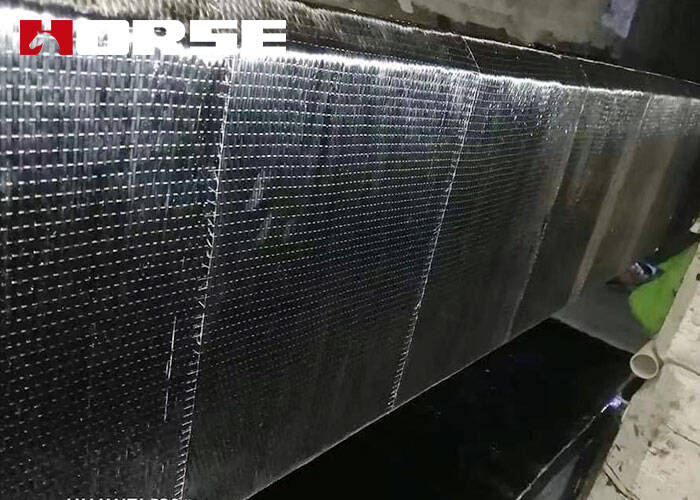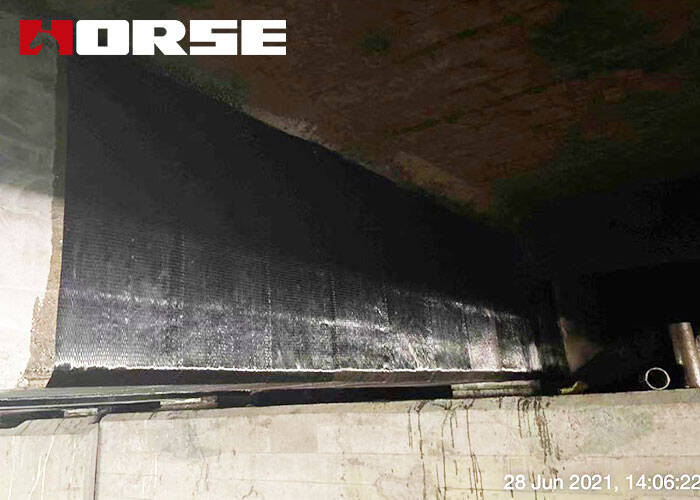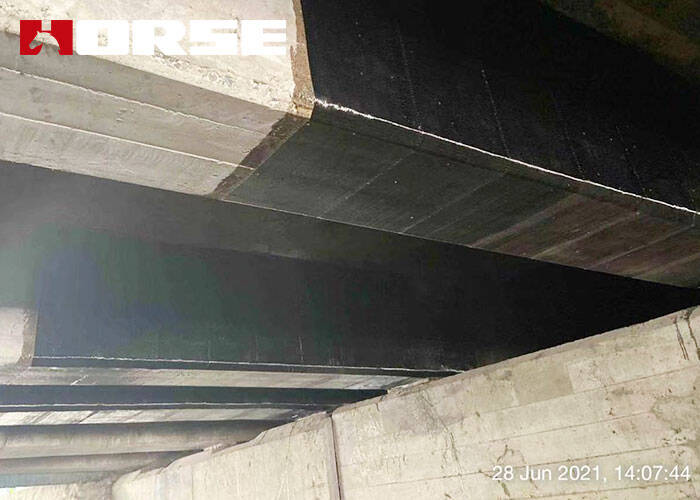Solutions
Horse Construction offers full range of structural strengthening materials with technical supports, documentation supports, products supports, project supports.
Reconstruction And Reinforcement | Carbon Fiber Reinforcement Process

Construction preparation
1. Read the design and construction drawings carefully before construction, and locate the reinforced parts according to the design drawings.
2. The construction plan and construction plan should be drawn up according to the actual conditions of the construction site and the concrete to be reinforced.
3. Make preparations before construction for the carbon fiber sheets, supporting resins, machinery, etc. used.
Concrete base treatment
1. Remove the degraded parts of the concrete surface, such as spalling, hollowing, looseness, honeycomb, corrosion, etc., and repair the large-area inferior layer with epoxy mortar after removing it.
2. Use an angle grinder to smooth the surface of the concrete to remove surface scum, oil and other impurities until the new surface of the concrete structure is completely exposed. The corner sticking place should be treated with lead angle and polished into an arc shape, and the arc radius should not be less than 20mm.
3. After the surface is polished, use a powerful blower or vacuum cleaner to clean the surface dust and keep it dry.
Paint the bottom resin
1. The resin glue is composed of A and B components, and the primer should be prepared according to the mixing ratio provided by the material manufacturer. Put the main agent and the curing agent in the container one after the other and stir evenly with an electric stirrer. Determine the amount of glue used and strictly control the use time according to the actual climate and temperature conditions at the site. Normally, it will be used up within 1 hour.
2. After the resin glue is prepared, use a roller brush to evenly spread the bottom resin on the concrete surface. When the surface of the base resin is dry to the touch, the base layer can be leveled.

Adhesive surface leveling treatment
1. The leveling materials are also prepared according to the mixing ratio provided by the manufacturer.
2. The concrete surface should be repaired with acetone to wipe off the floating dust on the surface, and the dents should be repaired and leveled with leveling materials, and there should be no edges or corners.
3. The corners should be repaired into smooth arcs with levelling materials, and the radius should not be less than 20mm.
4. When the surface of the leveling material is dry to the touch, proceed to the next process as soon as possible.
Paste carbon fiber cloth
1. Cut the carbon fiber cloth to the size specified in the drawing, and must meet the design size. It is strictly forbidden to cut the carbon fiber cloth diagonally and prevent the phenomenon of wire drawing.
2. On the polished and leveled concrete surface, use a roller brush repeatedly to apply evenly. In order to ensure that the carbon fiber cloth is completely saturated, apply a layer (thin glue) to the carbon fiber cloth evenly with a putty knife (scraper) before sticking, and then stick it to the painted concrete surface. And in time, use a dry roller brush to repeatedly roll on the outside until the air bubbles are removed, so that the bonding resin glue is fully saturated with the carbon fiber cloth. Multi-layer pasting should repeat the above steps, and the next layer can be pasted only when the surface of the carbon fiber cloth is dry to the touch.
Finished product protection
After the carbon fiber cloth is pasted, 3-6mm sand (quartz sand) should be sprinkled on the glued construction surface to ensure the adhesion of the stucco layer. Conducive to plastering or spraying fireproof paint for protection.
Inspection and acceptance
The bonding quality between carbon fiber and concrete can be checked by hammering method or other effective detection methods. If there is a phenomenon of poor bonding such as hollowing, and the area of a single hollowing drum is not more than 10,000 square meters, it should be remedied by injecting glue into the needle. If the area of a single hollow drum is greater than or equal to 10,000 square meters, it should be cut and repaired and re-pasted. The total effective paste area confirmed according to the inspection results should not be less than 95% of the total paste area, otherwise it needs to be re-constructed.

Features of carbon fiber reinforcement
Carbon fiber reinforcement has the characteristics of space saving, simple construction, no need for on-site fixing facilities, easy construction quality, basically no increase in structural size and weight, corrosion resistance, and good durability.
1. High tensile strength, about 10 times that of steel with the same cross-section.
2. Light weight, the density is only 1/4 of ordinary steel.
3. Good durability, no rust, resistance to acid, alkali and chemical corrosion, suitable for use in various harsh environments.
4. The construction is convenient and quick, labor-saving and time-saving, and the construction quality is easy to guarantee.
The scope of application of carbon fiber reinforcement
Carbon fiber reinforcement is suitable for the bending and shear reinforcement of concrete beams, the bending reinforcement of slabs, the seismic reinforcement of columns, etc. It is also used for the reinforcement of factory buildings, buildings, school buildings, hospitals and other industrial and civil buildings. And the strengthening and strengthening of infrastructure such as roads and bridges, water conservancy, nuclear power and energy.
Carbon fiber reinforced service life
When used for reinforcement of existing buildings, it should be 30 years. When used for new projects (including reinforcement and reconstruction of new projects), it should be 50 years. In the actual construction process, it was found that the service life of carbon fiber cloth is definitely more than 50 years. Even if it is constructed in a harsh environment, the performance of the carbon fiber cloth will not be disturbed due to its super durability. It is impossible to estimate accurately at present. There is no clear test data in the industry that can detect the service life of carbon fiber cloth, and the durability is only the appraisal of the service life of carbon fiber structural adhesive.
You can find anything here you are in need of, have a trust trying on these products, you will find the big difference after that.

High strength, unidirectional carbon fiber wrap pre-saturated to form a carbon fiber reinforced polymer (CFRP) wrap used to strengthen structural concrete elements.

High strength carbon fiber reinforced polymer (CFRP) strip / laminate / plate for structural strengthening and concrete repair

Prestressed carbon fiber reinforced polymer(CFRP) plate for slab, beam strengthening to increase stiffness, reduce distortion and deflection of members, reduce the cracks, avoid and stop cracking.